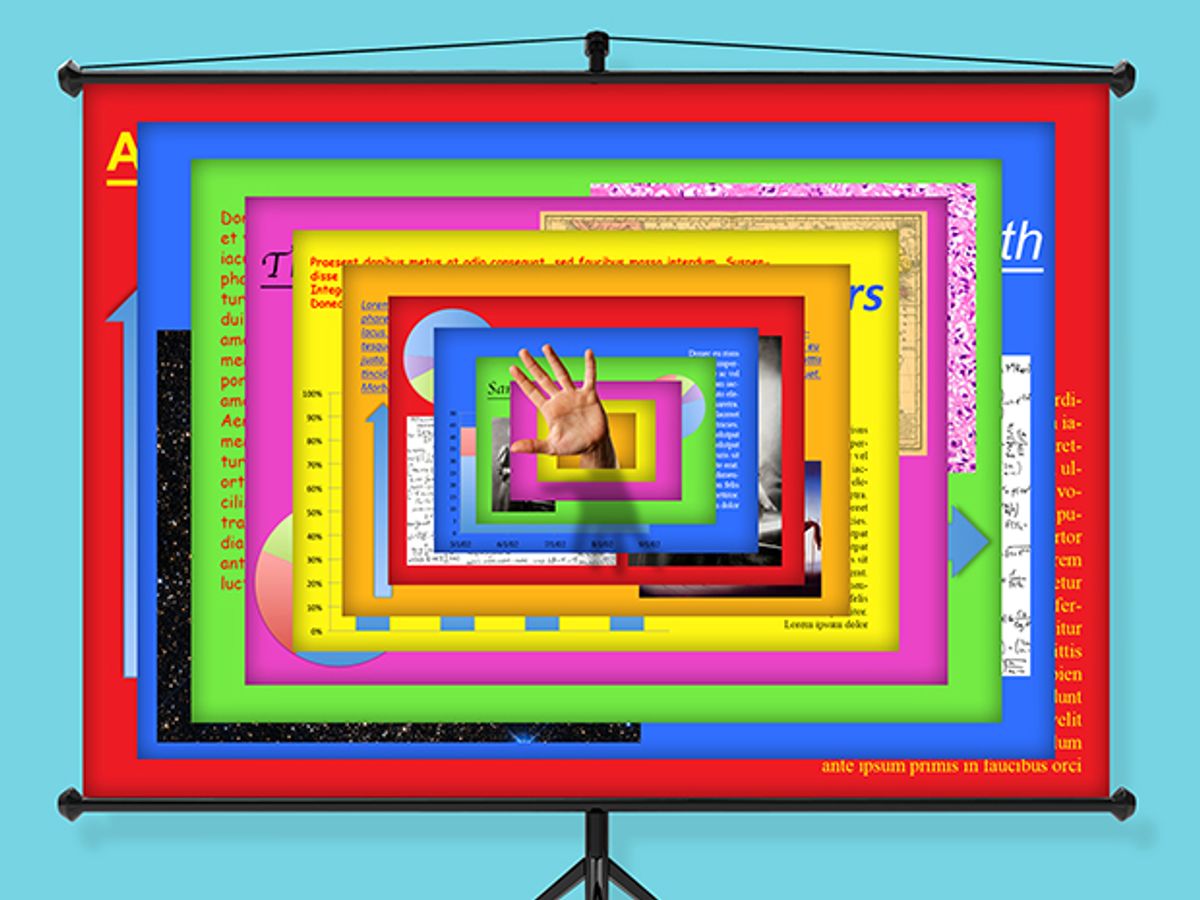Pity poor PowerPoint. Has there ever been a piece of software that elicited such negative feelings? Meeting goers have long been bored senseless by slides that were transition-heavy and content-light, living in fear of both ant fonts (impossible-to-read small type used by someone trying to cram as much text on a slide as possible) and the triple delivery (having the same text displayed onscreen, on a handout, and spoken aloud). Business leaders have raged against the productivity suck of employees spending hours making trivial tweaks of their presentations. Per Walter Isaacson in his book Steve Jobs (Simon & Schuster, 2011), one of the first things Jobs did on his return to Apple was prohibit PowerPoints. “People who know what they’re talking about don’t need PowerPoint,” Jobs said. People who did not know what they were talking about were said to have knowledge that is only PowerPoint deep [PDF]. The U.S. military became top-heavy with PowerPoint Rangers: military officers who excel at creating presentations.
PowerPoint carried on, of course, but a change is in the wind. The past few years have seen a welcome flowering of innovative ways to present information.
It began early in the new millennium with the PechaKucha (Japanese for chit-chat or chatter), a presentation consisting of 20 slides shown for 20 seconds each, without pause. (Not surprisingly, this format has led to some people calling this style of presentation the PechaKucha 20x20.) That’s a mere 6 minutes and 40 seconds, if you’re keeping score. A similar idea is the lightning talk: a short and strictly timed presentation, usually a maximum of 5 minutes long and sometimes with a maximum number of slides as well. An example is the Ignite talk, which is restricted to 5 minutes and 20 slides, each of which advances automatically after just 15 seconds. Another 5-minute presentation format is the data blitz, which is most often used to present academic research or scientific findings.
And some are blazing completely new presentation trails. An example is the Takahashi method, created by Japanese programmer Masayoshi Takahashi, where each slide consists of a single word in an extremely large font (a kind of anti ant font, if you will). The Lessig method, named after its principal proponent, Harvard law professor Lawrence Lessig, is similar in that it places on each slide nothing but a word, phrase, or short quotation.
Another novel strategy is speed geeking. This is an event in which the presenters are stationed throughout a large room or hall. The audience is divided into groups, and each group is assigned to a different presenter. After a short talk, the groups rotate to the next speaker, and this continues until each group has heard each presentation.
What’s a speaker to do if she has an hour’s worth of material to present in a world conditioned by the 20-minute TED talk? Easy. Break up her material into talklets, which are relatively short, stand-alone presentations. She could also construct à la carte content, which involves presenting only a subset of the presentation based on audience interests or questions.
But is all that nothing but attention deficit theater, as some critics suggest? Are we so conditioned by 140-character tweets that we can’t listen to someone speak for more than a few minutes? That might be true, but I prefer to see these new presentation formats as a positive trend. Albert Einstein once said that if you can’t explain something to a 6-year-old, then you don’t understand it yourself. In that spirit, perhaps we can say that if a modern-day presenter can’t explain a concept in the space of, say, a PechaKucha, then he needs to refine his ideas before foisting them on an audience.
This article appears in the April 2017 print issue as “Escaping the PowerPoint Prison.”
